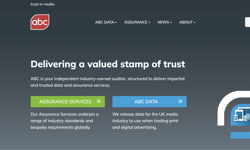Consumers have so much information flowing into them from email, social streams, text messaging and other formats that they are constantly challenged to stay abreast of the flow.
Today, there is a veritable river of information flowing into consumers’ desktops and mobile devices. The sheer volume of available information verges on overwhelming, and search helps to make the information more accessible. Search engines, most notably Google, have taken on the task of attempting to organise and deliver instantaneously the precise information the user wants – a monumental task. As consumer tastes and habits morph to cope with the river of information, so too must search engines and publishers. No matter how you parse the problem, we are all in the information management business.
Anytime Is Screen Time
Go to any public place, a casual dining spot, sports event or other place where you can quietly sit and inconspicuously observe the habits of those around you. Chances are they are using any spare fragment of time to search online, read push content, check their email, send texts and engage with social media on a mobile device. This trend, observed and commented on in my last article, is not abating. In fact, users are increasingly dependent on their mobile devices. The venerable desktop is still an important device used for writing, searching and reading, but the mobile is the ever present companion. At a recent sporting event, one of the fan amusement tactics was using a camera to scan the audience for an individual deeply engrossed in reading on a mobile device. The image with a timer running was projected onto the electronic scoreboard during breaks in the game. The so-called “oblivious cam” steadied over one individual for over ten minutes before he looked up and saw his image on the huge electronic scoreboard. My interest was, what was he reading? Was he using search, reading news content, or email? Why was it so compelling that he never looked up? This is a heavy content consumer, a publisher’s dream come true.
Forces of Change – Privacy and App-Centric Users
Just a few short years ago, search professionals were decrying that Google just didn’t understand how important social media was to the consumer. However, much of the social stream was behind walled gardens in so-called private areas. The owners of the social properties had and continue to have a bifurcated problem, protecting the information that the user wants to keep private while making readily available information of a more public nature. For example, a business profile on a social network provides valuable public information, but an individual’s personal postings are private. Just how far the boundaries of public vs private extend is still being debated and sorted out. Some say that the internet age has seen the death of privacy, but there are those who have said “not so fast”, and sought legally to preserve and protect the individual’s right to remain private.
In May 2014, the European Court of Justice ruled that EU citizens have a “Right to Be Forgotten”, and could request that search engines remove links to pages deemed private, even if the pages themselves remain on the internet. The user has to first fill out a specific form that must then be reviewed by the search engine prior to the removal of the links. In March of 2016, Google finally agreed to a complex formula for these removals that is based on the country of origin of the request. This is just one battle in what appears to be an ongoing war over how much information can and should remain private and to whom it can be distributed. Searchable, linked information is easy to find, but harder to hide. This is at the crux of the problem.
Google’s lifeblood is the advertising revenue generated by the over two trillion searches conducted on the search engine each year. The number of searches has grown exponentially. In 1999, the search giant was processing a billion searches a year, based on estimates of 100 million searches per day. Now, the attributed volume exceeds two trillion. This provides the search engine worldwide a huge revenue opportunity. There are threats and challenges that may slow continued growth. Apps present the biggest threat. They take consumers to content they want, bypassing the search engine. Consumers don’t want to have to dig through a mountain of information just to find their favourite brands, news content or social contacts. With the huge growth of mobile, it is not surprising that there has been a subsequent growth in apps which offer direct access to preferred information on the mobile device. For publishers, apps and the dedicated traffic they bring present potential growth and reader loyalty. Google itself has gotten into the app business – Google Maps is just one example among many.
A word of caution here is that users readily abandon apps that are not user friendly or are not kept up to date. Also, content presented on the app should be searchable whether directly from within the app or outside the app via a search engine so that those who have not obtained the app can still get the content and at the same time learn of its availability via an app. Apps should be considered by publishers as a near essential tool for improving their ability to communicate directly with their audiences.
The Ever Changing Search Results Page
Google is very aware of the challenges presented by the flood of information available to the consumer via mobile devices. Recent changes in the search results page can be seen as direct response to the new environment. Designing a search results page that works on the small screens of mobile devices is a formidable challenge. The smaller sized, vertically oriented screen is quite dissimilar to the larger format of the desktop. What we are seeing today is that the desktop presentation is becoming in many ways more like the mobile presentation. First, Google removed the ads that appeared in the right rail and moved to placing four ads at the top of the page and an additional three ads at the bottom, seven total ads down from eleven previously. Images and product display ads appear above the search results, and the knowledge box is prominently displayed in the right rail area. A search for ‘Fortnum and Mason’ yields a page that includes an ad for the store at the top, a display (shopping) ad for Royal Blend Tea and an extensive knowledge box. In the box are links to the website, Wikipedia basic information about the company and links to the firm’s social media profiles.
The first organic listing is the store’s website and includes an extensive set of site links and text snippets that are navigational guides within the listing. This presents a lot of information directly available to the user above the fold. The social stream of Twitter is carried along just below the brand listing at the fold so to speak. Recently, Google watchers have observed that Google is allowing longer titles and descriptions, the two types of text that accompany the web address in the search listing. In recent years, Google had sheared off the number of pixels allocated to these elements. With the recent changes, Google has increased the width of its main search results column. This will provide more real estate for the titles and descriptions. Google has increased the space available from 500 to 600 pixels. This is a significant increase, and here is why it is important. When a title or description is too long, Google simply truncates it and places ellipses at the end. Google uses proportional spacing, and search marketers think in terms of characters, which means that they must develop carefully constructed recommended character lengths that take into consideration the composition of the keywords and phrases used predominantly in their target content. The change from 500 to 600 pixels translates into approximately 10-15 more characters available for titles. This will allow the marketer to include more phrases and / or more branding that can make the title more compelling.
The length of the description has been impacted too. Descriptions increase by about 16-20 characters per line. The new length per line is approximately 100 characters, but do note that Google still is truncating descriptions longer than 150-160 characters. Google watchers expect this to adjust since descriptions are for the most part two lines. If a site uses descriptions that are less than 100 characters, they are allocated just a single line. These changes are very recent and appear to still be a moving target as Google continues to adjust the presentation.
The mobile page mirrors the desktop or the reverse, depending on your view. A search for ‘InPublishing’ yields the main site with a layered presentation of the site links, followed by the social stream, and then as the user scrolls further down the screen, there is the typical knowledge box information. Google’s data has shown that many mobile searches are for local businesses, so greater emphasis is placed on making sure that maps and directions are just a click away in the mobile results.
The changes made to the title and description length do not just apply to desktop searches. Google has increased title tag lengths for mobile search results even more than for desktop results. Google has now increased the maximum length of the mobile title tag to approximately 78 characters. This is an extra eight characters beyond the desktop display. This will speed users to the most relevant result faster. A more detailed result will shorten the search process.
There is no doubting Google’s commitment to mobile. Google’s AMP (Accelerated Mobile Pages) project recently published a roadmap designed to provide marketers and developers with direction and status on format, analytics, ads and access of their mobile development. This roadmap is expected to be updated regularly, twice a quarter. This will provide valuable information to those who work with mobile.
Any discussion of search trends today must look not just at the information retrieval process, but should also include a nod to the huge growth in voice search. In the future, this will take on a much greater role and merits watching. For publishers, the challenges will be to continue to provide quality information across all streams since it is likely that they will be accessible to search users. Review your Twitter posts and elevate your discourse in this medium. Make sure that other elements of your social stream mesh with the direction and tone of the other content that you are producing. Look carefully for ways to more completely engage users whether through apps or news feeds so that you can capture the attention of the continuously searching reader.












